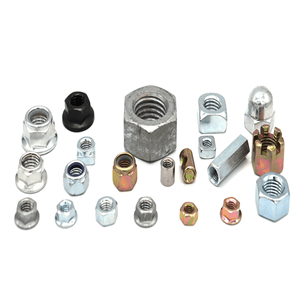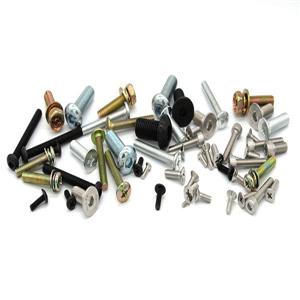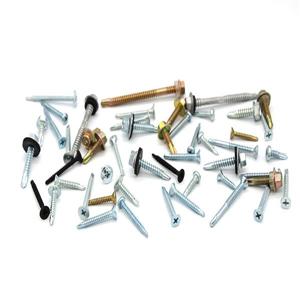This article thoroughly understands normalizing, annealing, quenching, and tempering!
1 What is quenching?
The quenching of steel is to heat the steel to a temperature above the critical temperature Ac3 (hypoeutectoid steel) or Ac1 (hypereutectoid steel), hold it for a period of time to fully or partially austenite, and then cool it at a rate greater than the critical cooling rate. A heat treatment process for rapidly cooling to below Ms (or isothermal near Ms) for martensite (or bainite) transformation. Generally, the solid solution treatment of aluminum alloy, copper alloy, titanium alloy, and tempered glass or the heat treatment process with rapid cooling process is also called quenching.
Purpose of quenching:
1) Improve the mechanical properties of metal products or parts. For example: increase the hardness and wear resistance of tools, bearings, etc., increase the elastic limit of springs, and improve the comprehensive mechanical properties of shaft parts.
2) Improve the material properties or chemical properties of some special steels. Such as improving the corrosion resistance of stainless steel and increasing the permanent magnetism of magnetic steel.
When quenching and cooling, in addition to the reasonable selection of the quenching medium, there must be a correct quenching method. Commonly used quenching methods mainly include single-liquid quenching, two-liquid quenching, stepwise quenching, isothermal quenching, and local quenching.
Iron and steel workpieces have the following characteristics after quenching:
① Unbalanced (ie unstable) structures such as martensite, bainite, and retained austenite were obtained.
② There is a large internal stress.
③ The mechanical properties cannot meet the requirements. Therefore, steel parts are generally tempered after quenching.

2 What is tempering?
Tempering is a heat treatment process that heats the quenched metal material or part to a certain temperature, and then cools it in a certain way after holding for a certain period of time. Tempering is an operation performed immediately after quenching, and it is usually the last part of the workpiece to be heat treated. One process, so the combined process of quenching and tempering is called final treatment. The main purposes of quenching and tempering are:
1) Reduction of internal stress and brittleness. There is a lot of stress and brittleness in the quenched part. If it is not tempered in time, it will often deform or even crack.
2) Adjust the mechanical properties of the workpiece. After quenching, the workpiece has high hardness and brittleness. In order to meet the different performance requirements of various workpieces, tempering can be used to adjust the hardness, strength, plasticity and toughness.
3) Stable workpiece size. By tempering, the metallographic structure can be stabilized to ensure that it will no longer deform during subsequent use.
4) Improve the cutting performance of certain alloy steels.
The effects of tempering are:
① Improve the stability of the organization, so that the workpiece no longer undergoes structural transformation during use, so that the geometry and performance of the workpiece remain stable.
② Eliminate internal stress in order to improve the performance of the workpiece and stabilize the workpiece geometry.
③ Adjust the mechanical properties of steel to meet the requirements of use.
Tempering has these effects because when the temperature increases, the ability of atoms to move increases, and the atoms of iron, carbon, and other alloy elements in steel can diffuse faster, so that the rearrangement and combination of atoms can be achieved, which makes it unstable. The unbalanced organization gradually transformed into a stable balanced organization. The elimination of internal stress is also related to the decrease in metal strength as the temperature increases. Generally, when steel is tempered, the hardness and strength decrease, and the plasticity increases. The higher the tempering temperature, the greater the change in these mechanical properties. Some alloy steels with high alloy element content will precipitate some fine-grained metal compounds when tempered in a certain temperature range, which will increase the strength and hardness. This phenomenon is called secondary hardening.
Tempering requirements: Workpieces with different uses should be tempered at different temperatures to meet the requirements in use.
① Cutting tools, bearings, carburized hardened parts and surface hardened parts are usually tempered at a temperature below 250 ° C. After low temperature tempering, the hardness changes little, the internal stress decreases, and the toughness slightly improves.
② Tempering the spring at 350 ~ 500 ℃, can obtain higher elasticity and necessary toughness.
③ Parts made of medium carbon structural steel are usually tempered at a high temperature of 500 to 600 ° C to obtain a good combination of appropriate strength and toughness.
When steel is tempered at about 300 ° C, it often increases its brittleness. This phenomenon is called the first type of tempering brittleness. Generally, tempering should not be performed in this temperature range. Some medium-carbon alloy structural steels are also easily brittle if they are slowly cooled to room temperature after tempering at high temperatures. This phenomenon is called the second type of tempering brittleness. Adding molybdenum to steel or cooling in oil or water during tempering can prevent the second type of tempering brittleness. Reheating the second type of tempered brittle steel to the original tempering temperature can eliminate this brittleness.
In production, it is often based on the requirements for the performance of the workpiece. According to different heating temperatures, tempering is divided into low temperature tempering, middle temperature tempering, and high temperature tempering. The heat treatment process that combines quenching and subsequent high temperature tempering is called quenching and tempering, that is, it has high strength and good plastic toughness.
1. Low temperature tempering: 150-250 ℃, M temper, reducing internal stress and brittleness, improving plastic toughness, higher hardness and wear resistance. Used to make measuring tools, cutters and rolling bearings.
2. Medium temperature tempering: 350-500 ℃, T temper, has high elasticity, and has certain plasticity and hardness. Used to make springs, forging dies, etc.
3. High temperature tempering: 500-650 ℃, S tempering, with good comprehensive mechanical properties. Used to make gears, crankshafts, etc.




